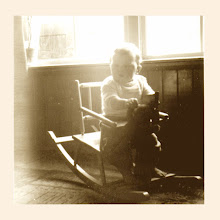This post is mostly intended to draw your attention to this remarkable video posted on YouTube by Ngoniba:
And if, like me, you can't get enough of these videos, please look around for more on Ngoniba's Youtube channel. Here is one to help you on your way.
The principle star of these videos is, of course, Mariam Bagayogo. You may remember the video I posted a few years ago. As I mentioned then, besides the singing and the balafons accompanying her I was particularly fascinated by the dancing. And, having watched Ngoniba's videos a few times, I am again fascinated by the intricate dancing in these videos.
It is no secret that dance is at the core of a lot of (if not most) music in Africa. When I first started interviewing Malian artists in the 1980s I was struck by the frequent use of the word "rythme" when they were talking about songs. It soon became clear to me that this was not accidental, but that rhythm and music are the same thing, or part of the same thing. And that rhythm also meant dance. Talking to Daouda 'Flani' Sangaré and Alou Fané, who had both been dancers with the Ballet National du Mali, I learnt that all the dances have a meaning, as does the rhythm. A dance can carry a message, like "I fancy you" or "I respect you", or can - for example - be used to underline the dancers' identity as part of a group, family, caste etcetera.
When it comes to dances there still are many misconceptions with the 'general public' in the western world. "African dances" often are seen as very exhuberant, with arms and legs flapping all over the place, and - preferably - with loud djembe drumming. Fortunately, most dances are not like this, and are actually very controlled and wonderfully subtle. I remind you of that fantastic dancer in the Oumou Sangaré video I posted earlier, or Alou Fané's delightfully understated dancing in this video.
The movements of the dances by Mariam Bagayogo also do not conform with the general idea of "african dances". Look at this video by Mariam from 1986 for example (another one from Ngoniba):
The flexing of the knees, the step: dance and music are one.
EDIT May 12, 2013: Ngoniba has sent me a link to a recent and very interesting article on Maliweb about Mariam Bagayoko. In this article she talks about her career and about her situation at the age of 70. Apparently she has taken over the care of the 17 children and 4 wives of two of her brothers who have passed away. Her message to Malian readers is that they should follow in the footsteps of their elders, i.e. respect the traditions.
EDIT September 22, 2013: I have had to remove the link to the article on Maliweb, as the site appears to be hacked.
May 12, 2013
Subscribe to:
Post Comments (Atom)





















No comments:
Post a Comment